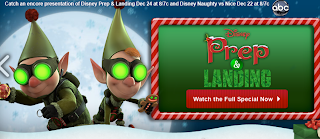Sonoma County is relatively proud of its planning heritage;
Rohnert Park, south of Santa Rosa, was founded at the same time as the
Levittowns, and was marketed as a new middle-class city. Occasionally, local cheerleaders will refer to it as the first planned city in the United States, which flies in the face of history but which locals generally regard as a mostly harmless bit of boosterism. I say "mostly harmless" because
Sonoma County's self-imagined role as a trailblazer means it tends to miss the fact that its problems are predictable ones that have occurred elsewhere.
For a time when I was in the 4th grade, I went to the
Templewood School, in
Welwyn Garden City, Hertfordshire, England. For someone from Sonoma County, California, this was an interesting experience, for a host of reasons. One reason, though, that I didn't realize until much later, is that Sonoma County's general plan (consciously or not) has been, is, and will be modeled on the garden city movement, and Welwyn Garden City is one of the movement's best examples.
The
Garden City movement was really inspired by a single novel -- Edward Bellamy's
Looking Backward. The details aren't germane to this post, but
Looking Backward describes what today would be called a socialist utopia.
Sir Ebenezer Howard took those ideas and ran with them, and decided that creating the world Edward Bellamy described meant that planned, self-contained communities, surrounded by greenbelts, should be created. These cities would have approximately 30,000 residents, and would contain proportionate areas for residences, industry and agriculture. Howard envisaged a cluster of several
garden cities as satellites of a central city of 50,000 people, linked by road and rail.
 |
Garden City Diagram
|
As socialist utopias, the garden cities were something of a failure; property values tended to rise, and blue collar workers were forced out in favor of middle class families. Industry and agriculture would thus suffer due to higher labor costs, and they moved out, too. The garden city ended up becoming a garden suburb, built around transport (roads, and importantly railroads) that connected it to a nearby city where its residents work during the day -- which ultimately made the garden suburb economically dependent, undermining the whole point of the movement.
Sir Howard's first such city,
Letchworth Garden City, was thus a modest economic success, if not much of an immediate political one. It was followed by Welwyn Garden City. Howard's disciples sought to make Welwyn even more beautiful than Letchworth, and as a former resident, I can tell you, they succeeded to an amazing degree. As a fourth grader, I remember walking through small wooded areas, and then through winding, calm, pleasant neighborhoods on my way to Templewood. The school itself backs up on to
Sherradspark Wood, which is something right out of the
Lord of the Rings. Those rare times I rode in a car, the enormous, green open spaces left an indelible memory -- I still remember the view along the city's Parkway, which I (much later) learned is considered one of the finest urban vistas in the world.
The unintentional economic success of the garden cities was not missed by the denizens of
Whitehall. In the aftermath of the Second World War, they embarked on a program of creating
new towns, which, for an American audience, is something like the English version of
Levittown. Of course, Levittowns are not socialist utopias. But the irony is that cities
designed to be socialist utopias ended up being exactly what the U.K. middle class was looking for (Welywn Garden City itself was "back designated" as one of the new towns). The garden cities' successors, whether new towns or Levittowns, reflect the same design aesthetic that made Letchworth Garden City and Welwyn Garden City popular -- which brings us back to places like Rohnert Park, California.
The basic problem of the garden city movement didn't go away just because American developers began using it. American planned communities, due to their amenities, landscaping, and design proved very attractive to the middle class--the working class rarely even got a foothold. Those new middle class residents commuted, and thus the planned community became ever more economically dependent on transport links. In Welwyn Garden City, this was no problem -- the city's rail station, on the
East Coast Main Line connecting London to Edinburgh, heads straight into
King's Cross (20 miles away), where it's (
from a Sonoma County resident's perspective) easy to get anywhere in London in short order.
Sonoma County isn't on the U.S. equivalent of the East Coast Main Line. It's on the
Northwestern Pacific, which, by way of contrast, was shut down by the U.S. Federal Government in 1999. Sonoma County has nothing like Bay Area Rapid Transit (BART), which the eastern part of the San Francisco Bay Area uses to emulate the success of Welwyn Garden City's access to the East Coast Main Line. Sonoma County's main roadway, US-101, had, by the mid 1990's, become chronically jammed by traffic. Economically, the structural weakness this created was concealed (to a degree) by the consequences of rampant real estate speculation and asset price inflation. When the housing market crashed, the economic prerequisite necessary for the success of a garden suburb, excellent transportation links, wasn't there, and Sonoma County's unemployment went from 2% to 11%. Other parts of the Bay Area, with high quality transportation, weathered the storm better.
Due to the lack of rail transport, Sonoma County has become nearly entirely dependent on roadways and cars. The roads are now in the worst condition of any in the San Francisco Bay Area, and inter-county travel by cars is one our most significant sources of greenhouse gas emissions. Sonoma County is backing into the railroad solution; it has begun construction on the Sonoma-Marin Area Rail Transit (SMART) line. The surprise, perhaps, though, is that the solution is fifty years "after the fact," so to speak.
There are other interesting questions that spin off of the initial premise that Sir Howard had in founding Letchworth and Welwyn Garden Cities. The unintended consequences of applying an urban design model built upon the premise of utopian socialism has broader effects than merely kicking Sonoma County in the teeth economically over the last ten years -- but those are other posts for other days.


































